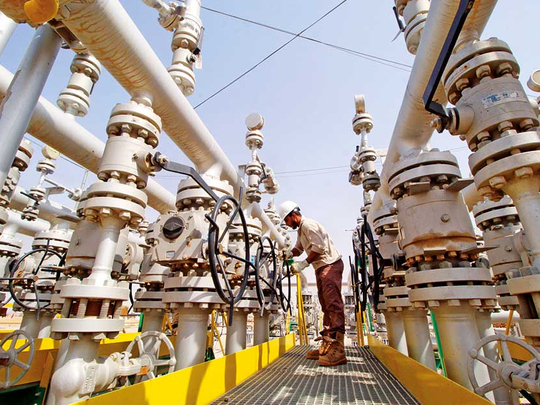
Dubai
The meeting on Monday between and Opec (Organisation of Petroleum Exporting Countries) and non-Opec producers in Russia may provide much-required stability to oil prices, if not a boost, analysts say.
Amid rising supplies, and slowing demand, oil producers will meet in St. Petersburg to talk about the conformity to oil output cuts, and may take steps to fasten the pace of rebalancing.
“This meeting may help stabilise oil prices in the short term at current levels, but a meaningful price recovery is not likely from any decisions announced in St. Petersburg,” said Vaqar Zuberi, head of hedge funds at Mirabaud Asset Management.
On Friday, Brent crude fell 2.52 per cent to end at $48.06 per barrel, while the West Texas Intermediate closed 2.45 per cent lower at $45.77 per barrel.
Prices have lingered below $50 a barrel amid concerns that elevated global supplies will offset cuts by the Opec and its partners as part of a deal to help rebalance the market.
The International Energy Agency said the Opec’s compliance slumped to 78 per cent in June, the lowest rate this year, from 82 per cent in May, even as the non-Opec showed an improvement.
Libya and Nigeria contributed the most to the 393,000-bpd increase in the total crude output in June compared to May. Libya’s output jumped by 127,000 bpd (barrels of oil per day) to 852,000 bpd, while Nigerian crude production rose by 96,700 bpd to 1.733 million bpd.
Encouraging
However, ahead of the meeting, Kuwaiti oil minister Essam Al Marzouq said the compliance was encouraging.
“The current production cut conformity rates are so good and encouraging that they hit 106 per cent by Opec member states and 80 per cent by non-Opec states,” Al Marzouq was quoted by the state news agency as saying.
This time the cut conformity is unprecedented compared to previous times when commitment hardly hit 60 per cent, he added.
Opec’s Secretary General Mohammad Barkindo said on Sunday that that rebalancing had taken time, and the pace may fasten in the second half of 2017.
“We are pretty sure that the rebalancing process may be going at a slower pace than earlier projected, but it is on course. It is bound to accelerate in the second half,” Barkindo was quoted as saying by reports.
However, analysts say that rebalancing remains challenging at this point.
“Medium term rebalancing of the oil market remains challenging given the softness in demand, and decrease in the break even costs of US shale producers,” said Zuberi.
The IEA expects oil demand to stay at the same pace as in 2016, or 1.3 million bpd. Demand is expected to continue to rise in 2018, the increase reaching 1.4 million barrels a day.












